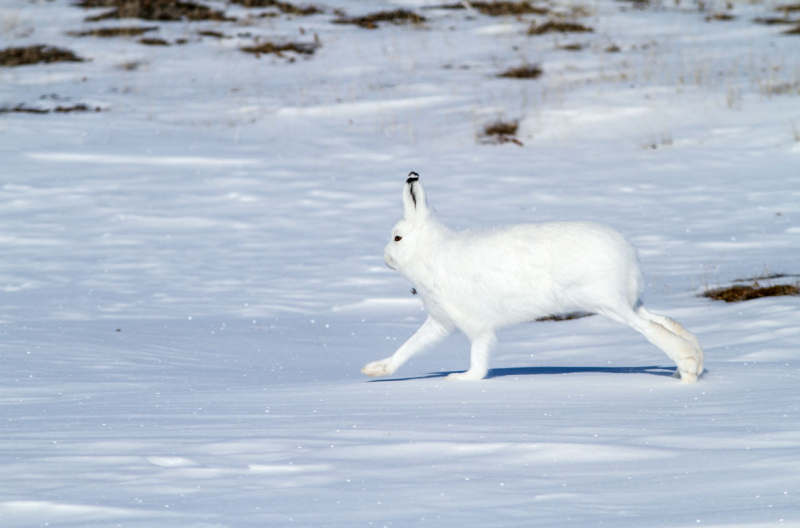Arctic Hare
The frigid tundra of North America is home to the arctic hare. These hares do not hibernate; instead, they have developed a multitude of behavioral and physiological adaptations to withstand the perilous cold. Their shorter ears are the most obvious example of their dense fur and low surface area to volume ratio, which helps them retain body heat. These hares will occasionally create snow caves and congregate for warmth.
Hares are slightly bigger than rabbits, and they often have longer ears and taller hind legs. Arctic hares are swift and may run up to 40 mph, just like other hares and rabbits. They have a bright white coat that serves as good concealment in the region of ice and snow throughout the winter. In spring, the hare's colors change to blue-gray in an approximation to local rocks and vegetation.
Although they occasionally live alone, arctic hares can also be seen in packs of dozens, hundreds, or even thousands of animals. Arctic hare groups don't tend to develop during mating season, unlike many other animals. Animals pair off and mark their territories for mating, albeit a male may choose to have multiple female partners. Every year, in the spring or early summer, females give birth to one litter. Two to eight young hares mature swiftly and resemble their parents by September. The following year, they will be prepared to reproduce.












